Disclosure Information
Disclosure: This article contains affiliate links. If you make a purchase through one of these links, our team may earn a commission at no extra cost to you. Learn more. Thanks for your support!
We’ve all been there. You’re out and about, relying on your smartphone for navigation, communication, or capturing that perfect Instagram shot, when suddenly the dreaded low battery icon appears. This is where a power bank, a portable battery charger, becomes a lifesaver.
But with so many options available, choosing the right one can be overwhelming. This power bank buying guide will walk you through everything you need to know before you buy a power bank, ensuring you get the perfect device to keep you powered up on the go.
Let’s dive in!
Why You Need a Power Bank
A power bank is more than just a tech accessory; it’s a source of peace of mind. Whether you’re a frequent traveler, a busy professional, or simply someone who relies heavily on their devices, a power bank offers the convenience of on-the-go charging, ensuring you never miss an important call, lose your way, or miss capturing a memorable moment.
It’s also a vital part of any emergency preparedness kit, providing power when you need it most. Here’s a quick recap of the key benefits:
- Convenience: Say goodbye to the anxiety of a dying battery.
- Travel Essential: A must-have for travelers, especially in areas with limited outlet access.
- Emergency Preparedness: Provides backup power during outages or unexpected situations.
- Increased Productivity: Stay connected and productive without interruption. Mobile devices have become indispensable in modern life, contributing significantly to both personal and professional productivity (source).
Key Factors to Consider When Buying a Power Bank
Now, let’s dive into the crucial factors you need to consider to make the right choice:
1. Capacity (mAh): How Much Juice Do You Need?
The capacity of a power bank, measured in milliampere-hours (mAh), is arguably the most crucial factor. It determines how much charge the power bank can hold and, consequently, how many times it can charge your devices. A higher mAh rating means more charging power.
General Guide:
- 5,000mAh – 10,000mAh: Good for one or two full phone charges, ideal for daily use.
- 10,000mAh – 20,000mAh: Perfect for multiple phone charges or charging tablets, suitable for weekend trips.
- 20,000mAh and above: Can charge multiple devices many times over, power smaller laptops, or provide power for extended trips.
Consider Your Devices: Think about the battery capacity of your phone, tablet, or other devices. If your phone has a 3,000mAh battery, a 10,000mAh power bank will provide roughly three full charges.
2. Output (Amperage/Voltage): The Need for Speed
Output refers to the power delivered by the power bank to your device, and it directly impacts charging speed. It’s typically measured in Amperes (A) or Watts (W).
Standard Outputs:
- 1A: Older, slower charging standard.
- 2.1A – 2.4A: Faster charging, suitable for most smartphones and tablets.
- 3A and above: Even faster charging, often associated with fast charging technologies.
Fast Charging Technologies:
- Quick Charge (QC): A popular fast charging standard developed by Qualcomm.
- Power Delivery (PD): A newer, more versatile standard that can deliver higher power levels, suitable for charging laptops and other power-hungry devices.
Compatibility:
- Make sure the power bank’s output and any fast charging technologies it supports are compatible with your devices.
3. Input: Recharging Your Power Bank
Input refers to how the power bank itself is charged.
Common Input Types:
- Micro-USB: An older, more common standard.
- USB-C: A newer, reversible connector that often supports faster charging speeds for both input and output.
Faster Recharging:
- USB-C input generally allows for quicker recharging of the power bank. Consider this if you want to minimize downtime.
4. Number of Ports: Sharing is Caring
Do you need to charge multiple devices at once? If so, look for a power bank with multiple USB ports. Most commonly, you will find power banks with two USB-A ports. Some newer models offer a combination of USB-A and USB-C ports.
5. Size and Weight: Portability Matters
The physical size and weight of a power bank are important, especially if you plan to carry it around regularly. There’s a trade-off between capacity and portability.
- Smaller and Lighter: Ideal for everyday use, easily fitting into a pocket or small bag.
- Larger and Heavier: Offer higher capacity but can be bulkier to carry, more suitable for travel or extended use where portability is less of a concern.
6. Build Quality and Safety Features: Don’t Compromise on Safety
Always choose power banks from reputable brands to ensure quality and safety. Look for these essential safety features:
- Overcharge Protection: Prevents the power bank from overcharging, which can damage the battery.
- Over-discharge Protection: Stops the power bank from fully depleting, extending its lifespan.
- Short-Circuit Protection: Protects against damage from short circuits.
- Temperature Control: Prevents overheating during charging or discharging.
7. Special Features: The Nice-to-Haves
These features aren’t essential but can add convenience and functionality:
- Pass-through Charging: Allows you to charge the power bank and your devices simultaneously.
- Built-in Cables: Eliminates the need to carry separate cables (make sure they match your devices).
- Wireless Charging: Offers cable-free charging for compatible devices.
- LED Indicators: Clearly display the remaining power level.
- Flashlight: A handy feature for emergencies or low-light situations.
8. Price: Finding the Sweet Spot
Power bank prices vary depending on capacity, features, and brand. Generally, expect to pay:
- Under $20: Basic, lower-capacity power banks.
- $20 – $50: Mid-range power banks with decent capacity and features.
- $50 and above: High-capacity power banks with advanced features like fast charging and multiple ports, or specialized power banks for laptops.
Types of Power Banks
While most power banks function similarly, here are a few distinct types:

Top Power Bank Recommendations
To help you narrow down your choices, here are some top recommendations categorized by need. We’ve considered various factors, including capacity, charging speed, portability, and price, to help you find the perfect power bank for your specific requirements.
1. Best Overall
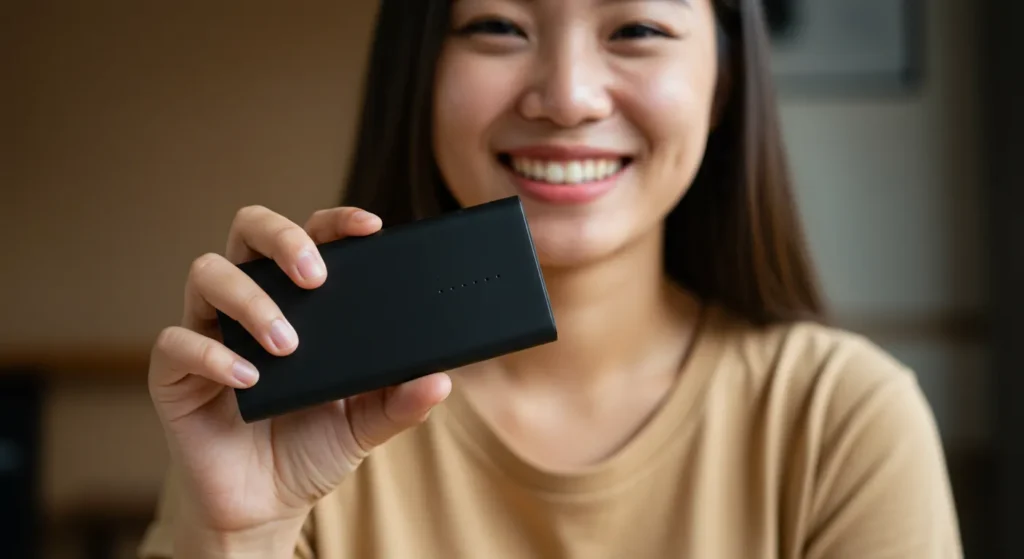
Sometimes you just need a well-rounded power bank that balances performance, portability, and price. These are our top picks for the best all-around power banks that excel in most areas:
- Anker PowerCore 10000 PD Redux: This power bank packs 10,000mAh of capacity along with 18W USB-C Power Delivery and 12W USB-A charging. It’s a reliable and compact option, offering fast charging for both the power bank itself and compatible devices, striking an excellent balance between portability and power.
- Mophie Powerstation PD: Another great choice from a reputable brand, the Mophie Powerstation PD offers 6,700mAh capacity and 18W USB-C PD. Its fabric finish adds a premium touch and feel.
2. Best for Travel
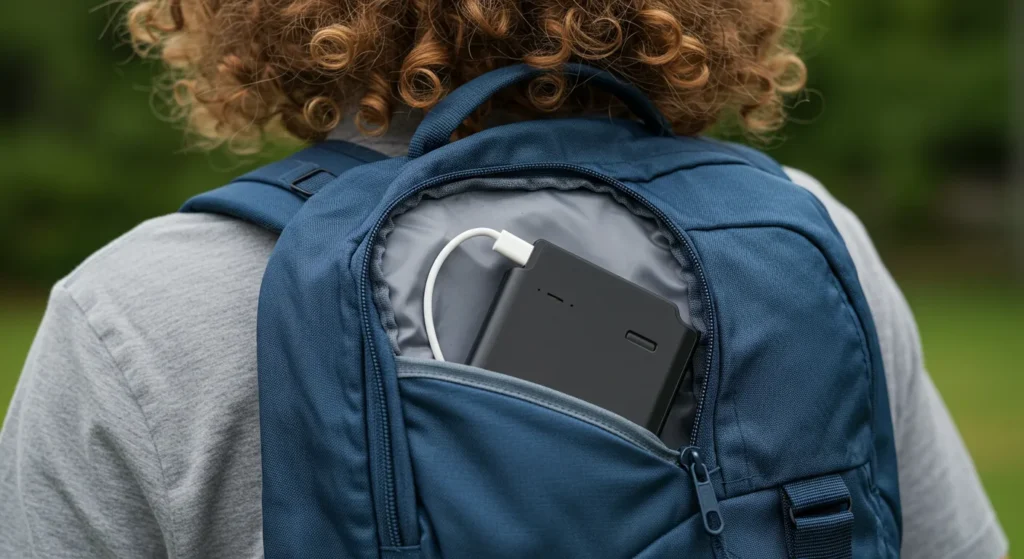
When you’re on the go, you need a power bank that can keep up with your adventures. These power banks offer high capacity and multiple ports, making them ideal for travelers who need to keep multiple devices charged for extended periods:
- Anker PowerCore+ 26800 PD 45W: If you need a lot of juice, this is a beast. With a huge 26,800mAh capacity, 45W USB-C PD, and two 15W USB-A ports, it can handle multiple devices and even charge some laptops. It also includes a 60W wall charger.
- Anker Power Bank, 20,000mAh Portable Charger: This power bank is a fantastic travel companion, especially for those who prefer the convenience of an integrated cable. It offers 20,000mAh capacity, a built-in USB-C cable capable of up to 87W fast charging, an additional USB-C port, and a USB-A port.
3. Best Budget
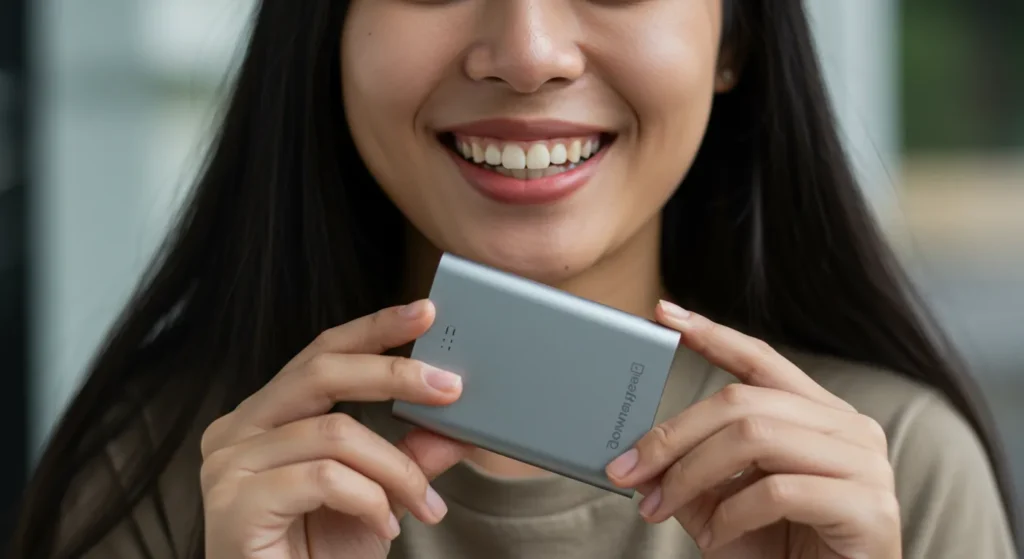
You don’t have to break the bank to get a decent power bank. These options offer excellent value for your money, providing reliable charging without compromising on essential features:
- INIU 10000 Portable Charger: This highly-rated option is easy on the wallet without skimping on essentials. It provides 10,000mAh capacity and two USB-A ports (2.4A and 3A) for fast charging.
- Anker PowerCore Slim 10000: A reliable and very portable budget choice from Anker, this power bank has a 10,000mAh capacity and a 12W USB-A port.
4. Best for iPhone

Apple users have specific needs, and some power banks are better suited for iPhones than others. If you are in the Apple ecosystem, these options offer seamless compatibility and features tailored to iPhones, including MagSafe options:
- Anker 622 Magnetic Battery (MagGo): Designed specifically for iPhone 12 and 13 series, this power bank offers convenient magnetic wireless charging with its 5,000mAh capacity. It also has a USB-C port for wired charging.
- Apple MagSafe Battery Pack: Apple’s own MagSafe battery pack seamlessly integrates with iPhones. It provides 1,460mAh capacity and 7.5W wireless charging. Note that the capacity is lower than other options.
5. Best for Android
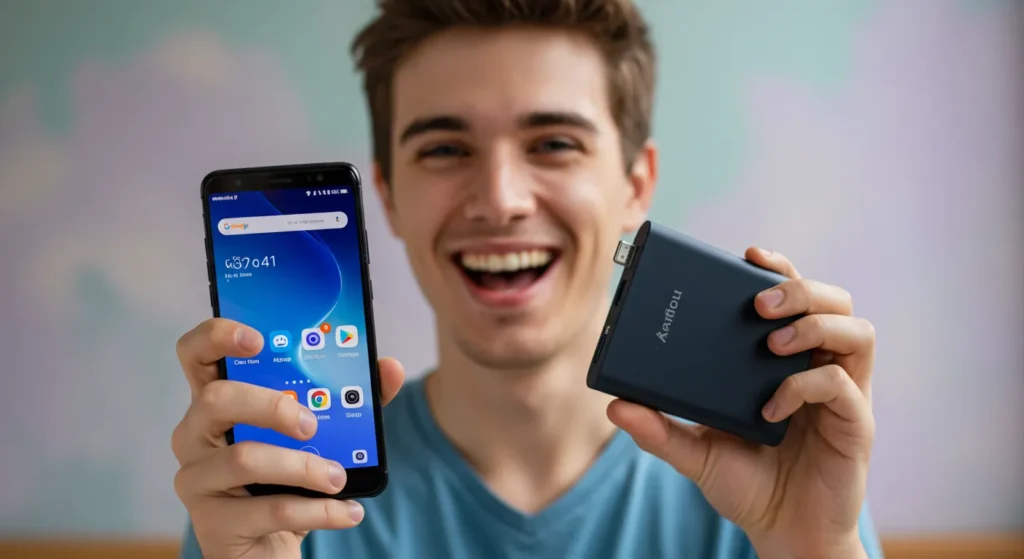
Android phones come in all shapes and sizes, with varying charging standards. These power banks are well-suited for a wide range of Android devices, offering fast charging and broad compatibility:
- Samsung 25W Wireless Portable Battery: If you have a Samsung Galaxy phone, this is a great choice. It offers 10,000mAh capacity, 25W USB-C PD for fast wired charging, and 7.5W wireless charging.
- Zendure SuperMini: This tiny yet powerful power bank is good for a variety of Android phones. It packs 10,000mAh capacity, 18W USB-C PD, and an 18W QC 3.0 USB-A port into a compact design.
6. Best High Capacity
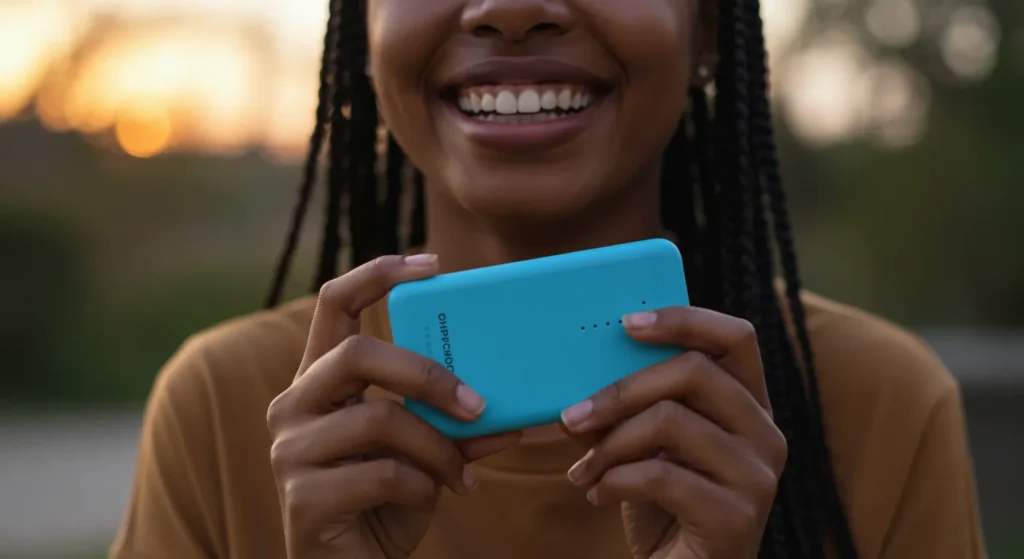
Sometimes, you need a power bank that can go the distance. These high-capacity options are perfect for long trips, camping, or emergency situations where you need a lot of power for multiple devices:
- Goal Zero Sherpa 100PD: This premium, rugged power bank is designed for outdoor adventures. It boasts a 25,600mAh capacity, 60W USB-C PD, two USB-A ports, and even Qi wireless charging.
7. Best Compact
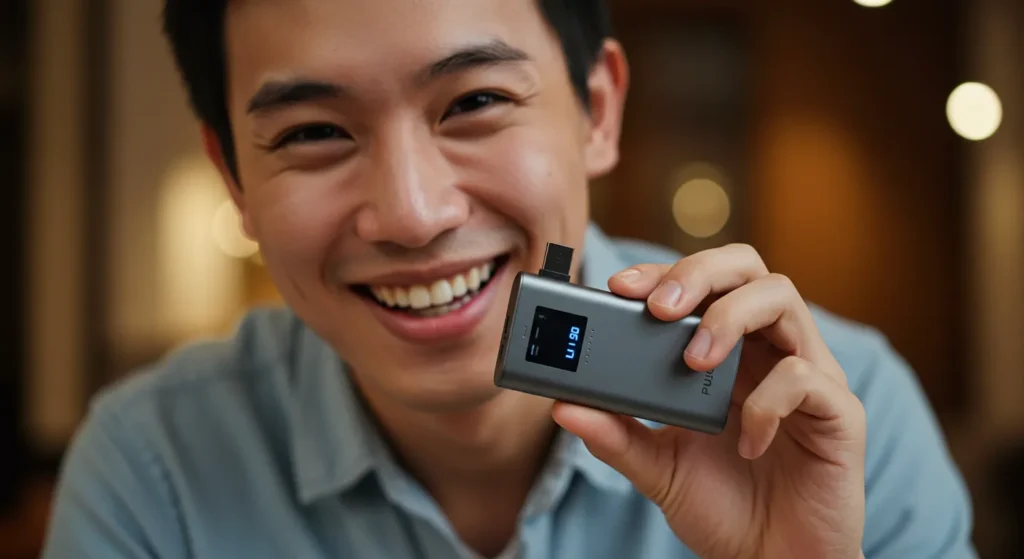
For everyday carry, a smaller power bank is often preferred. These compact options are lightweight and portable, easily fitting into a pocket or small bag without sacrificing too much charging power:
- Anker PowerCore 5000: This ultra-compact power bank is perfect for slipping into your pocket or purse for emergency power. It offers 5,000mAh capacity and a 10W output. (~$20)
8. Best for Laptops
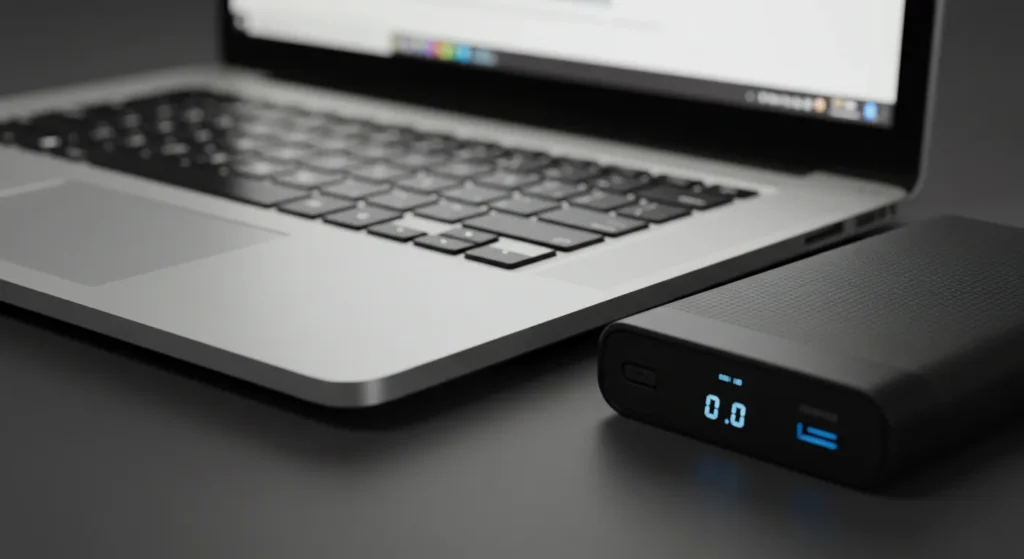
Charging a laptop requires significantly more power than charging a phone. These power banks are specifically designed to handle the higher power demands of laptops, featuring AC outlets or high-wattage USB-C PD:
- Mophie Powerstation Pro AC: This power bank features a 27,000mAh capacity and, most importantly, a 100W AC outlet that can charge most laptops. It also has a 60W USB-C PD port. (~$200)
- Omni 20+ 20000mah AC/DC/USB-C/Wireless Power Bank: Another solid option for laptop charging, the Omni 20+ provides a 20,000mAh capacity, a 100W AC outlet, a 60W USB-C PD port, and even wireless charging capabilities. (~$250)
How to Use and Maintain Your Power Bank
To get the most out of your power bank and extend its lifespan, it’s important to use and maintain it properly.
- Initial Charge: Fully charge your new power bank before using it for the first time.
- Storage: Store your power bank in a cool, dry place when not in use. Avoid extreme temperatures.
- Avoid Extreme Temperatures: High heat or extreme cold can damage the battery.
- Use Regularly: Even if you don’t use it frequently, it’s good to use your power bank occasionally to keep the battery healthy.
- Don’t Fully Discharge: It’s best to recharge your power bank before it completely drains. Aim to keep it above 20% if possible.
Power Bank Buying Checklist
Here’s a handy checklist to help you make your decision:
- Determine your capacity needs: How many devices will you be charging, and what are their battery capacities?
- Consider charging speed: Do you need fast charging (QC or PD)? Are your devices compatible?
- Think about portability: How important are size and weight?
- Decide on the number of ports: Do you need to charge multiple devices simultaneously?
- Check for safety features: Overcharge, over-discharge, short-circuit, and temperature protection.
- Set a budget: How much are you willing to spend?
- Read reviews: See what other users have to say about the power banks you’re considering.
- Choose a reputable brand: Stick with well-known brands known for quality and reliability.
Conclusion
Choosing the right power bank doesn’t have to be a daunting task. By considering factors like capacity, output, portability, and safety features, you can find the perfect device to keep you powered up and connected wherever you go.
Remember to prioritize your individual needs and usage patterns to make an informed decision that will provide you with reliable power for years to come.
Suggested Reads: